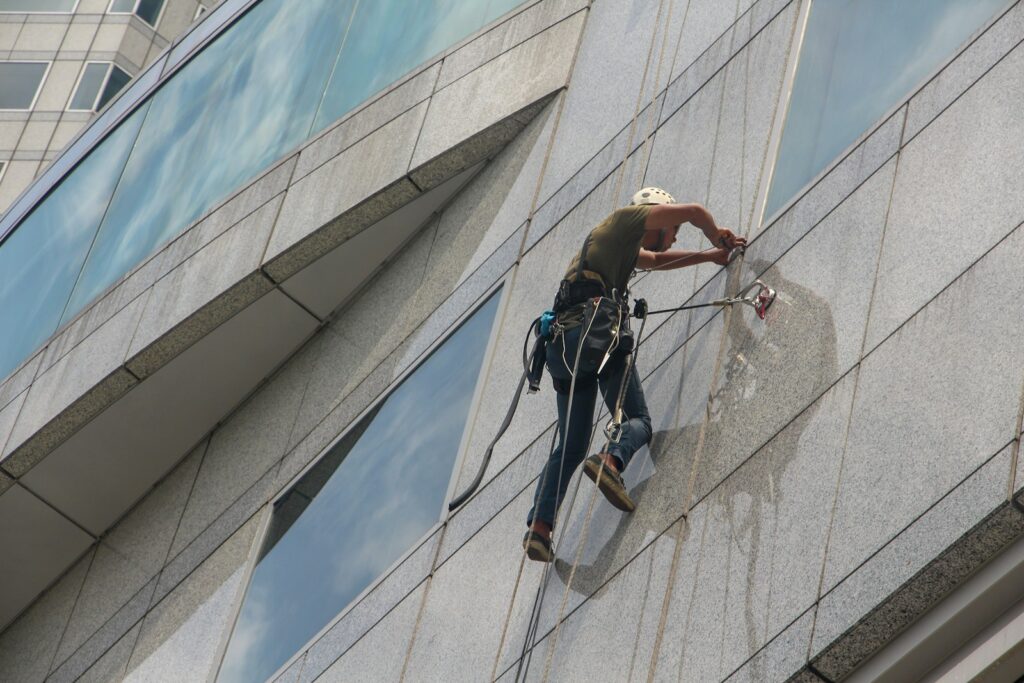In commercial building maintenance, innovative cleaning technologies have revolutionized how facilities manage their cleaning processes, ensuring more efficient, cost-effective, and thorough practices. These technologies improve the cleanliness and appearance of buildings and contribute significantly to the sustainability and health of the environment and the people within it.
Automated systems stand out for their ability to reduce labor costs and human error. Robotic cleaning machines, for instance, can be programmed to navigate large floor areas, adapting to obstacles and varying surface conditions. This automation extends beyond mere convenience, offering precise cleaning that is consistently replicable, ensuring that high-traffic areas receive the attention they require without needing constant human supervision.
Specialized Equipment for Effective Cleaning
One illustrative example of this innovative approach to cleaning is the use of specialized equipment such as 3/8-inch pressure washer hoses. These hoses are particularly valued for their durability and flexibility, making them ideal for high-pressure cleaning tasks. The thickness of the hose ensures that it can handle substantial psi levels, which is essential for effectively removing grime and debris from various surfaces, from parking garages to sidewalks and facades. This capability allows facilities managers to maintain pristine exterior conditions, enhancing the building’s overall aesthetic and longevity.
Further extending the range of specialized equipment, commercial buildings also benefit from using high-efficiency particulate air (HEPA) vacuum systems and electric floor scrubbers. HEPA vacuums are crucial in environments that demand a high standard of cleanliness and air quality, as they can trap a large amount of tiny particles that other vacuum cleaners would recirculate back into the air. On the other hand, electric floor scrubbers provide an equally essential service by efficiently cleaning large floor areas, leaving them dry and minimizing the risk of slips and falls. This combination of advanced equipment helps ensure that commercial spaces appear clean and uphold the highest standards of hygiene and safety.
Advancements in Microfiber and Green Cleaning Solutions
Transitioning to the specifics, microfiber technology is another leap forward in the cleaning industry. Unlike traditional cloths, microfiber uses synthetic fibers that are finer than one denier—roughly comparable to a strand of silk. This allows them to attract dust and dirt at a microscopic level, effectively removing particles without the need for chemical detergents. The result is a cleaning process that is not only more effective but also more environmentally friendly, reducing the reliance on harsh cleaners that can be detrimental to both indoor air quality and the building’s surfaces.
Moreover, integrating green cleaning solutions is pivotal in modern maintenance programs. These eco-friendly products are designed to minimize environmental impact, featuring biodegradable components that break down faster than traditional chemicals. Using these solutions in commercial settings not only supports global sustainability efforts but also safeguards the health of building occupants by reducing their exposure to toxic substances.
Touchless Disinfection and Advanced Filtration Systems
Additionally, the advent of touchless disinfection systems marks a significant improvement in cleaning technologies, especially in the wake of public health concerns. These systems utilize electrostatic sprayers that evenly distribute disinfectants across all surfaces, ensuring a thorough sanitization. This method is particularly effective in areas with a high risk of germ transmission, such as bathrooms and kitchens, providing a level of cleanliness that traditional methods need help to achieve.
Developing advanced filtration systems in HVAC units has been a game changer in maintaining indoor air quality. These systems can trap and eliminate a vast array of pollutants, allergens, and pathogens, thereby enhancing the health and comfort of building occupants. Regularly maintaining these systems, including timely filter changes and checks, ensures efficiency and longevity.
The Future of Smart Technologies in Cleaning
As we look to the future, the role of smart technologies in cleaning is set to grow exponentially. IoT (Internet of Things) devices can now monitor conditions in real-time, allowing immediate responses to issues like spills or increased foot traffic, which may require immediate attention. This improves the effectiveness of cleaning schedules and helps in resource management, ensuring that efforts are concentrated where and when they are most needed.
Integrating artificial intelligence (AI) into cleaning technologies is another promising development reshaping industry standards. AI-powered systems can analyze data collected from IoT devices to predict cleaning needs before they become apparent, thereby optimizing cleaning routines and resource allocation. For example, AI can determine the most efficient routes for robotic vacuums or adjust the intensity and frequency of cleaning based on usage patterns and historical data. This proactive approach maximizes efficiency and extends the lifespan of the building’s interiors by maintaining them more consistently and effectively.
Conclusion
The landscape of commercial cleaning has undergone significant transformation, driven by technological advancements that offer improved efficiency, effectiveness, and environmental sustainability. Adopting these technologies enhances the aesthetic appeal and longevity of commercial buildings and plays a crucial role in health and environmental conservation. As this field continues to evolve, the potential for innovations promises even more significant enhancements in commercial cleaning practices, underscoring the importance of embracing these advancements in maintaining our built environments.
